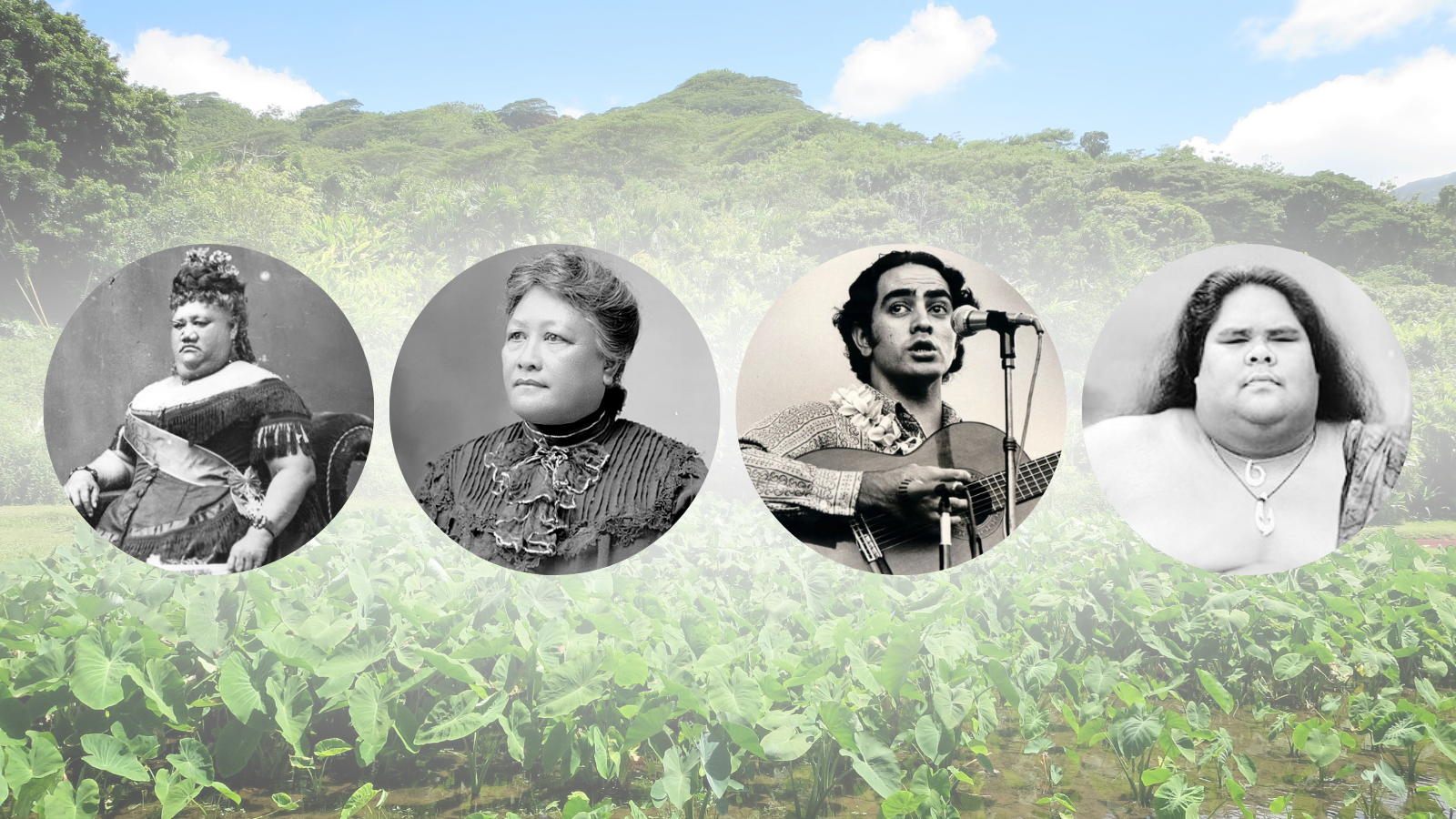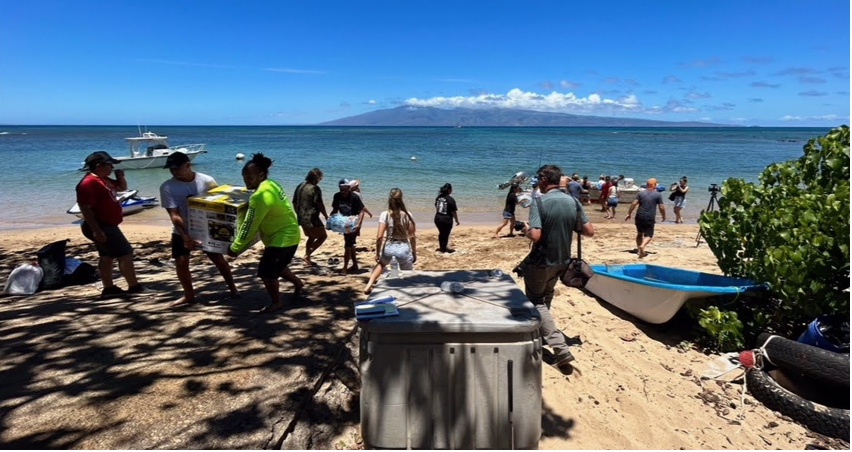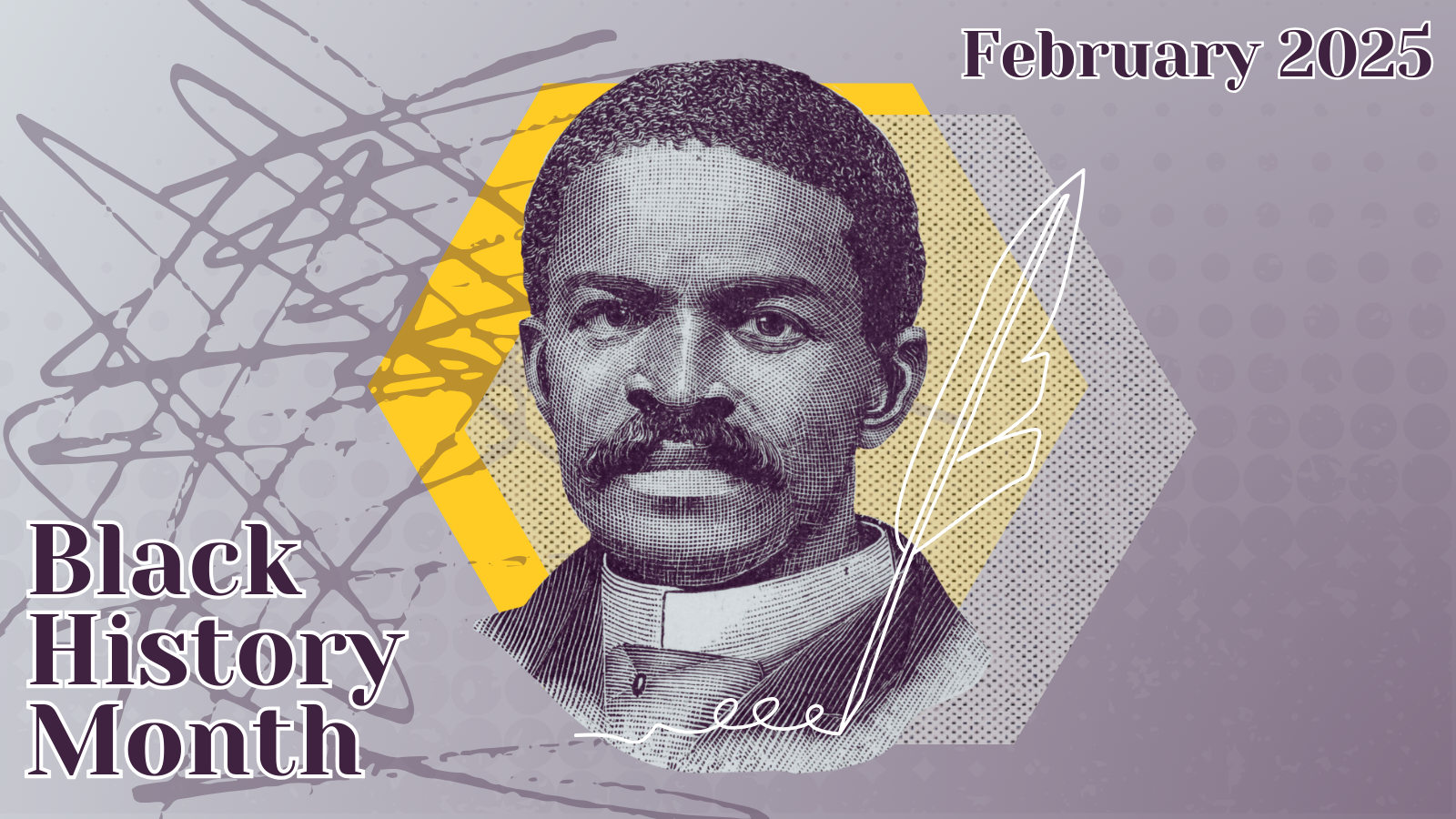Hawaiian History Month: Nā Aloha ʻĀina
September 11, 2024 Kawena Komeiji
In celebration of Hawaiian History Month and KŪKULU: HE WAI E MANA, we are honoring kiaʻi and aloha ʻāina who have helped to shape Hawaiʻi’s history. Follow us on Instagram or Facebook to see our posts every Thursday during the month of September!
Ruth Keʻelikōlani
Born at Pohukaina, Oʻahu in 1926, Ruth Keʻelikōlani was a descendant of Kamehameha I. Her mother was Kalani Pauahi, who died shortly after giving birth to her daughter. Ruta’s paternal lineage has been questioned over the years (usually between Kahalaiʻa or Kekūanaōʻa) which sometimes led her to being categorized as poʻolua, or a child of two fathers.
At a time of significant change in Hawaiʻi, Ruta remained staunchly Hawaiian and rejected foreign influence of culture, language, and religion. She refused to speak English and continued to worship Hawaiian gods. In August 1881, as Mauna Loa erupted and lava flowed towards Hilo, Keʻelikōlani traveled to Hilo and chanted and gave gifts to Pele. It is said that this helped to save Hilo from destruction by volcano.
Keʻelikōlani spent most of her time in Kona at Huliheʻe Palace but maintained a residence in Honolulu named Keōua Hale. The original structure burned down in 1873 and it is rumored that when Keʻelikōlani learned of Kalākaua’s plans to build ʻIolani Palace, she made sure that the new Keōua Hale was bigger and more grand than ʻIolani Palace. Part of this estate still stands today at Princess Ruth Keʻelikōlani Middle School (formerly known as Central Middle School).
Keʻelikōlani’s health declined shortly after Keōua Hale was completed and she passed away at Huliheʻe Palace in 1883. Because Keʻelikōlani’s biological children and hānai son died before her, most of her vast landholdings were willed to Bernice Pauahi Bishop, who established Kamehameha Schools and Bishop Estate. Bishop Estate remains one of the largest landholders in Hawaiʻi today.
Resources
- “Ka Pele ma Hilo” in Ka Nupepa Kuokoa, 10 September 1881 (article link)
- Nā Mamo Aloha Na Keʻelikōlani – Speech and Panel by ʻŌiwi TV (video link)
- Princess Ruth Keʻelikōlani (DVD link)
- School Stories: Keʻelikōlani by PBS Hawaiʻi (video link)
Emma Aima Nāwahī
Emma Aima Nāwahī (1854-1935) was born in Hilo, Hawaiʻi to a Hawaiian mother and Chinese father, who co-founded the Paukaʻa Sugar Plantation. In 1881, she married Joseph Nāwahī and they had three sons and one hānai daughter. Unfortunately, most of their children passed away at young ages.
After the overthrow in 1893, Aima joined Hui Aloha Aina o Na Wahine and became an executive officer for the Hilo chapter. The Hui Aloha Aina o Na Wahine were largely responsible for gathering thousands of signatures for the anti-annexation petitions (Kūʻē Petitions).
In 1895, Aima and her husband, Joseph Nāwahī, started the newspaper, Ke Aloha Aina. When he passed away after a battle with tuberculosis in 1896, Aima took over as treasurer for Ke Aloha Aina though it is likely she had a bigger role in editing and printing the newspaper. Aima kept the newspaper running until 1920.
Aima was an active member of the ʻAhahui Kaʻahumanu (Kaʻahumanu Society) and continued writing even with the close of Ke Aloha Aina. In 1919, she wrote an article to Ka Nupepa Kuokoa, advocating for women’s right to vote. She passed away in December 1935.
Resources
- “Haule ia makuahine i aloha nui ia” in Ke Alakai o Hawaii, 16 January 1936 (article link)
- Ke Aloha Aina newspapers (via Papakilo)
- “He aha ke kumu maikai a kupuno loa e loaa ai ka mana koho i na wahine Hawaii?” by Emma Aima Nawahi in Ka Nupepa Kuokoa, 11 April 1919 (article link)
- Na Wahine Kue: Women in Resistance by Dr. Noenoe Silva and Kumu Hailiopua Baker (presentation link)
George Jarrett Helm Jr.
From Kalamaʻula, Molokaʻi, George Jarrett Helm Jr. (1950-1977?) was a Hawaiian musician and activist. At Saint Louis School, he learned about Hawaiian culture from Kumu John Keola Lake and Kumu Kahauanu Lake.
Helm was known for his unbelievable falsetto voice and Molokaʻi style of playing guitar. He used music to educate and spread the message of aloha ʻāina. For example, when he sang “Kuʻu Pua i Paoakalani”, he would also explain that the mele was written by Queen Liliʻuokalani while she was wrongfully imprisoned.
Helm became the Director of the Protect Kahoʻolawe organization. The U.S. military claimed the bombing of Kahoʻolawe was necessary due to “combat readiness” in the interest of “national defense”. Helm famously responded, “To me, national defense is in the spirit of the people. It’s in the heart. If the people no more the heart to defend their country, that’s bad already.” On January 4, 1976, Helm and other activists landed on and occupied Kahoʻolawe in protest of the U.S. military bombing of the island, which would kick off a set of occupations.
In 1977, Helm and other activists landed on Kahoʻolawe again and all were consequently arrested, except for two who stayed hidden on the island for over a month. Out of concern for his friends and without knowing that they had already been caught, Helm set out for Kahoʻolawe again with Kimo Mitchell and Billy Mitchell.
After two days, they decided to return to Maui but their boat ride never came (it was later found sunken). Using surfboards and fins, they tried to swim to Maui and were split up by the currents. Kimo Mitchell and George Helm were never seen again.
Resources
- Hawaiian Soul by ʻĀina Paikai (streaming UH video link; login required)
- Hawaiian Souls: The Movement to Stop the U.S. Military Bombing of Kahoʻolawe by Jonathan Kamakawiwoʻole Osorio (book chapter link; login required)
- Hoʻihoʻi Hou, a tribute to George Helm & Kimo Mitchell by Rodney Morales (book)
- Kahoʻolawe aloha ʻāina: George J. Helm by Nā Maka o ka ʻĀina (video link; also available on DVD)
-
40 years after men’s disappearance at sea, their vision for Kahoolawe has become a reality by Colleen Uechi in Maui News (link)
Israel Kaʻanoʻi Kamakawiwoʻole
Many know Israel Kaʻanoʻi Kamakawiwoʻole (1959-1997) for his rendition of “Somewhere Over the Radio/What a Wonderful World”. Affectionately known as Braddah IZ, he grew up in Kaimukī and moved to Mākaha where he and his brother, Skippy, met fellow bandmates, Louis “Moon” Kauakahi, Sam Gray, and Jerome Koko, forming the Mākaha Sons of Niʻihau. Together, the Mākaha Sons of Niʻihau released over 20 albums and won numerous Nā Hōkū Hanohano and Hawaiʻi Music awards.
Kamakawiwoʻole released his first solo album, Ka ʻAnoʻi, in 1990, winning numerous awards. In spite of having health issues, he would go on to release three more albums (Facing Future, E Ala E, N Dis Life) and win many more awards. He famously watched the award ceremony for the 1997 Nā Hōkū Hanohano Awards from his hospital room.
Braddah IZ was also an outspoken supporter of Native Hawaiian rights and sovereignty. Several of his songs called for justice and change including the popular “Hawaiʻi ‘78”,“E Ala E”, “Living in a Sovereign Land” with the Hawaiian Style Band, and more. His mana and ability to connect with fans, both near and far, was unmatched and he never lost his aloha for Hawaiʻi or the lāhui Hawaiʻi.
When Braddah IZ passed away in 1997, his casket laid in state at the Hawaiʻi State Capitol, one of only a few non-political people to have this honor. His death was a devastating blow to many in Hawaiʻi. It was reported that over 10,000 people attended his funeral and thousands more attended the scattering of his ashes at Mākua, including the Hōkūleʻa and a convoy of more than 100 trucks and cars.
Resources
- Israel Kamakawiwoʻole and friends (streaming UH video; login required)
- IZ: Voice of the People by Rick Carroll (book)
- IZ: The Songbook Collection (book)
- Mākaha Sons of Niʻihau: Live from the Mākaha Bash (streaming UH video; login required)


